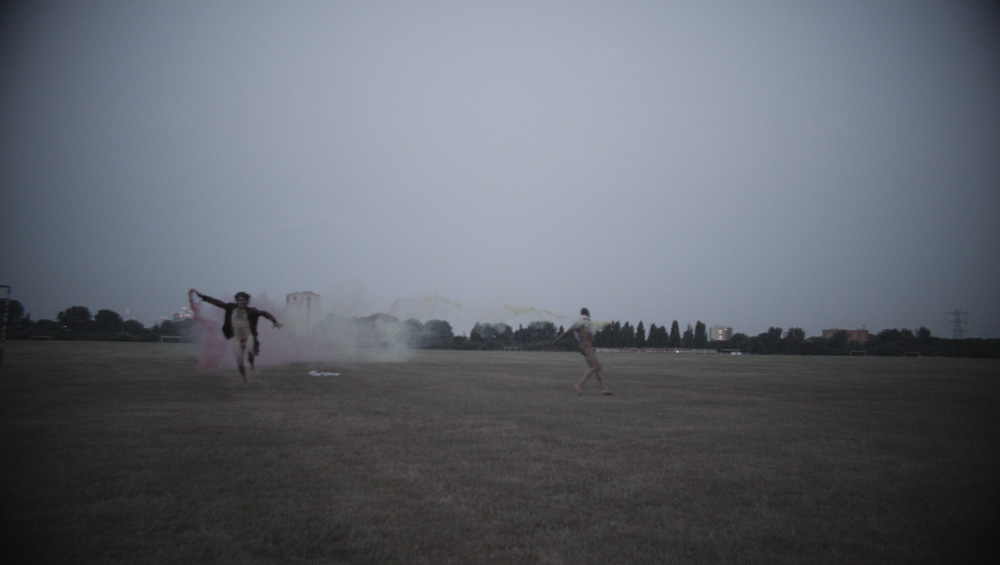
by VERONICA SIMPSON
Andrea Luka Zimmerman (b1969, Munich) is a film-maker, artist and social activist. Since arriving in the UK in the 1990s and enrolling at film school at St Martins (before it became Central St Martins), she has produced a body of work that focuses on the margins of society, investigating, with great compassion, the lives of the under-represented and excluded. Created via a painstaking process of observation and collaboration, the resulting films are a poetic layering of imagery, blending archive with documentary or quasi-documentary footage, real stories with imaginary; in this way, she aims to get closer to the truth of life in all its complexity, revealing the tensions around identity, relationships and co-existence, as well as the impulses and urges that unite us all.
Her latest film, Here for Life, created with theatre director Adrian Jackson, founder of the theatre company Cardboard Citizens, has just been released.
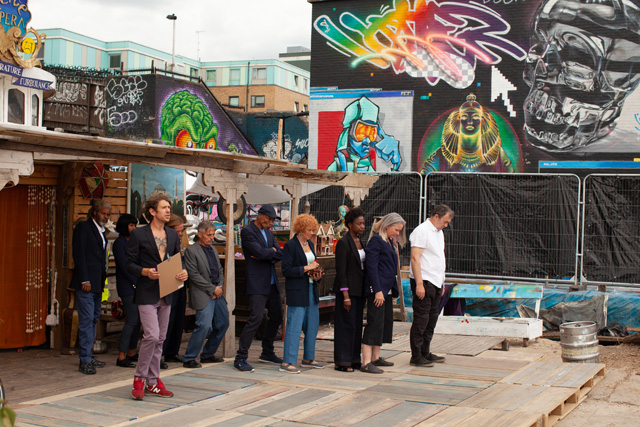
The performers rehearsing at Nomadic Gardens in London during the filming of Here for Life (2019). Photograph: Marc Hankins.
Its preview screening was in the colourful, graffiti-strewn Nomadic Community Gardens, in Shoreditch, east London. A former dump between two train tracks, it has been reclaimed as allotments and transformed into a vibrant community hub (although for how long is unclear, as it is still earmarked for development). This garden features prominently in the film, its unresolved – or still evolving - nature forming the perfect backdrop which, in quasi-documentary style, delves into the stories of 10 individuals, observing their personal revelations of past misery, mischief and mayhem, as well as evolving friendships, as the community bonds over food, music and storytelling.
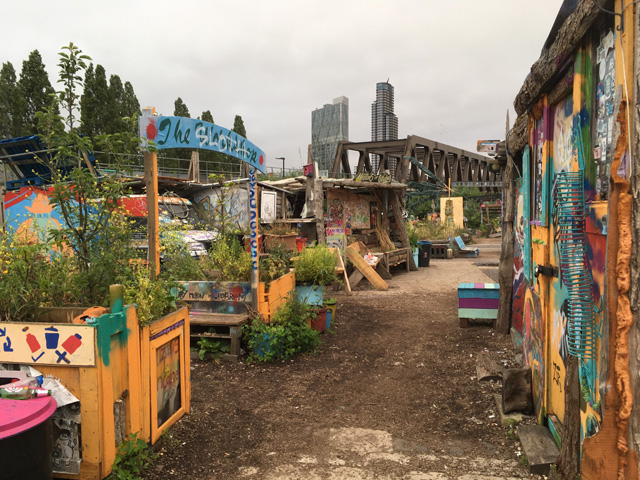
Nomadic Gardens in London. Photograph: Veronica Simpson.
Luka Zimmerman’s previous work includes Erase and Forget (2017), which premiered at the Berlin Film Festival, where it was nominated for the Glashütte Original Documentary Award. Estate, A Reverie (2015) was filmed over seven years, exploring the impact on a community of the demolition of the Haggerston estate in Hackney, east London, which was also where the artist lived for 17 years.
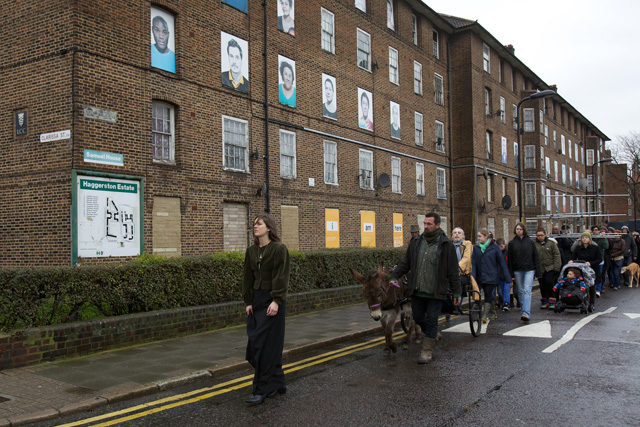
Film still from Estate, A Reverie (2015) by Andrea Luka Zimmerman.
She featured in the London Open at the Whitechapel (2018), and had a solo show, Common Ground, at Spike Island in Bristol (2017). She has been shortlisted for the Grierson Awards and the Jarman Award and is the co-founder of collectives Fugitive Images and Vision Machine (collaborators on Academy Awards-nominated documentary The Look of Silence).
Here for Life was produced and commissioned by Artangel, selected via its Open competition, with the support of the National Lottery through Arts Council England and Artangel’s Guardian Angels.
Veronica Simpson: One of the things I really enjoyed about the film was the sense that the place where the preview was screened, and where a lot of the action took place – the Nomadic Community Gardens in Shoreditch, east London – was as much a character in the film as the people in it. How did you come across that space and what is its significance?
Andrea Luka Zimmerman: It’s been there, I think, five or six years now, it is legally claimed (as a meanwhile space). It’s magical, in that it’s self-built. It started out as people creating vegetable beds for the local community and there is now a strong community there. It’s very mixed, in ages, gender, race. It’s beautiful.
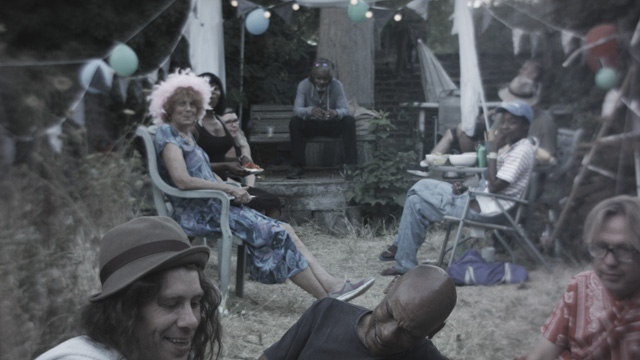
Film still from Here for Life (2019) by Andrea Luka Zimmerman and Adrian Jackson.
VS: The actors seemed completely at home there. Is that where you found them?
ALZ: Most of them we found through Cardboard Citizens, which is a theatre company Adrian [Jackson] runs. I’m not really so drawn to working with actors. These are actors, but they are not actors – their life isn’t so separate from the work, which is why I like working with them. They are all actors and they are all themselves, and the whole film is really playing on that. All the actors have real-life experiences that are important for their personality in the film.
Both Adrian and I are interested in representations of people on the margins, for different reasons. For me, it’s because I come from there. And I always felt misrepresented my whole life. Even now, I fit in this world, this world and this world [she slices up different, imaginary sections of world with her hands], but I don’t feel comfortable. For example, I’m a reader at a big university (she is a lecturer in dramaturgy and devising for performance at Central Saint Martins). I don’t feel comfortable in certain environments, you know, it’s subtle. But it takes an effort of belonging. If I feel this, other people also feel this.
How do we bridge these differences and gaps and encounter each other truly and fully? So I was always interested in [Brazilian experimental theatre director] Augusto Boal’s workshops on empathy and inhabitation, and Adrian worked with Boal. In fact, he brought him over (to Europe) and translated his works, so there’s a perfect match in a way. So we also used his methods of working with the actors, to invoke and build stories, to break through all these questions of who is who, whose story are we telling. Sometimes it takes another person to tell your story for it to live. And sometimes we hear our stories in another’s story and therefore we feel we belong. We wanted to raise all of these issues, which is why it took us so long to make. [The film took four years from funding to completion.] All of these people who made this film, they wouldn’t naturally now be friends. So, we built these relationships over a whole year and swapped people around and tried different combinations of people and there were the core group who bonded. And then we just went on this journey.
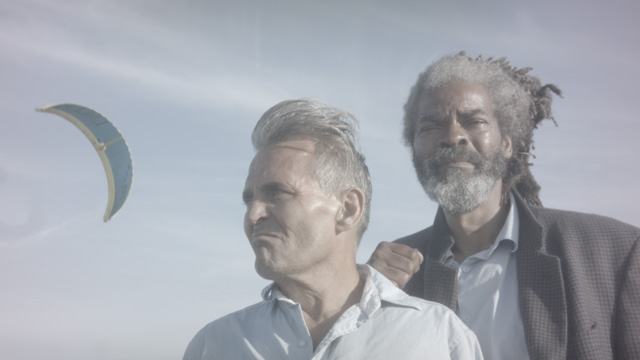
Film still from Here for Life (2019) by Andrea Luka Zimmerman and Adrian Jackson.
It always starts from the person. A lot of mainstream work makes this mistake: they look and try to interpret or talk on behalf of someone, but how do you really talk on behalf of someone? You can’t just learn it all from saying: “Tell me a little bit about your background.” I mean, that’s part of it, but if I asked what you are really like, you would not be able to say. We started out with a different film, actually. We started with De Sica’s 1948 film Bicycle Thieves. I feel it to be about catastrophe and creation and all that comes after. Then we asked ourselves, what does it mean today, first of all, to have such a film. When are we greedy, when do we have hope, and when do we hurt one another? When are we allowed to dream? Who is allowed to dream? Whose dreams enter the cultural circuit, and which cultural circuit matters? These are the discussions that led people to give their own experiences. Then we started swapping and building all these stories. What might appear in the film to be really intimate might not be. That’s how good the actors are. They are exceptionally good. Most people think it’s a documentary. Then they realise it’s a bit more fiction, or maybe something completely different. We are really playing with this and only exceptional actors can do that well.
VS: What comes across is the reality of the people in all their complexity, layers and nuances. For the first half, I genuinely believed it was a community of people you found and tracked, although there were elements, as you say, where people were overtly voicing each other’s stories, so you know it’s not quite reality. It felt like the place and the people articulated something very important about what’s seen and not seen. Who is seen and how. Finding or creating a space to voice the unfamiliar narratives is more and more important in an age where everyone is trying to be a celebrity – but by following what they think are the prescribed narratives. You must wish this film could have a bigger platform.
ALZ: It will. Waywardness is a really good way of describing it. It’s a refusal to accept the (dominant) narrative and even respond to that, but we create another narrative because we have to. We can live otherwise because we have to. I mean, this film will hopefully go to film festivals, cinemas. At the same time, it’s really important that this film goes straight away into different layers of society, into prisons, community centres, hostels, as well as film festivals and cinemas, in order to make all those conversations happen across those platforms.
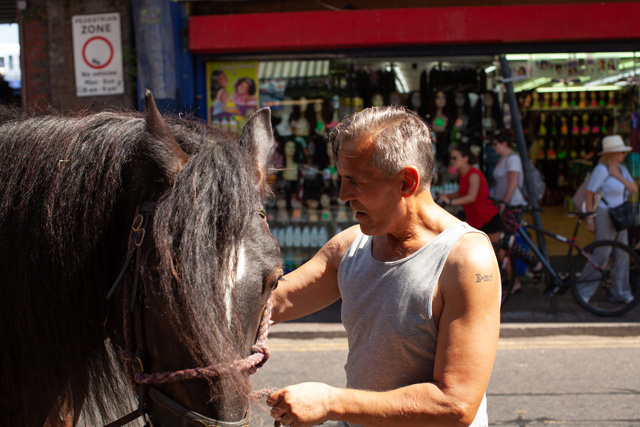
Patrick Onione with horse on Electric Avenue during the filming of Here for Life (2019). Photograph: Marc Hankins.
VS: There is mischief and hilarity, people breaking rules and yet at the same time, at the end of the film, there is a feeling of catharsis. When people discuss the choices they have made that damage themselves or other people, there is a sense of regret. But it ends with most people in a better place. Was this a genuine trajectory over the four years it took to make it?
ALZ: I feel what they are doing is trying to grapple with the situations that have been forced on them. The discussions are really quite nuanced. Errol (one of the characters) might say: “OK, I no longer steal stuff because the universe will provide.” Then another actor says: “What about the chocolate workers in the Ivory Coast? They have no choice.” For me, it’s not about redemption, it’s about asking the bigger questions and never stopping asking these questions … How come some people own 4,000 houses and few can afford to live in them, yet some people have nothing. These questions must never go away, and one must never feel comfortable. Sometimes we think there’s this narrative of closure, but there is no narrative of closure. Like racism is a process to eliminate (the other), tenderness is a process, love is a process. It’s complicated and you have to constantly try to see each other truly, and then we might have a different world. In the editing, for me, it’s less about individual redemption, more to be seen as a whole, and ask what question does it prompt in the viewer.
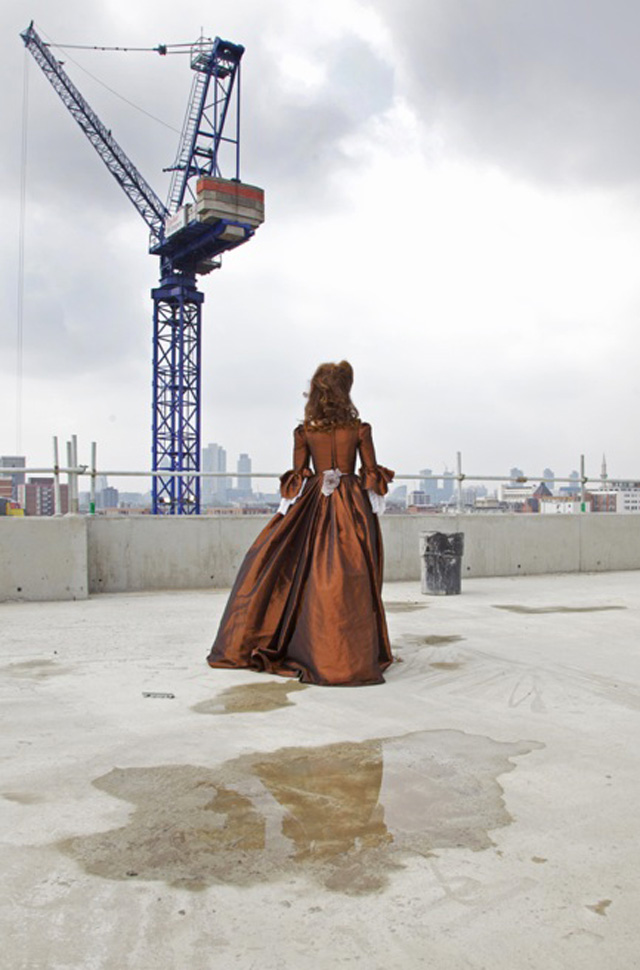
Film still from Estate, A Reverie (2015) by Andrea Luka Zimmerman.
VS: It’s embracing the arc of a life, but also the messiness of society.
ALZ: More like a Shakespeare play, though I don’t believe people are ever metaphors; they become that in a way [as a vehicle] for the bigger questions, for us, the audience, the gut feeling that says, how do you fit in to this picture?
VS: Clearly you love to collaborate. I liked a comment you made about your film Estate, A Reverie. You said: “It’s not about a community, it’s from a community.” How do you ensure that you are allowing that collective voice to come through when you are also, as director, the author?
ALZ: I think it’s still prompted by me. Estate would never have happened if I hadn’t made it. All the questions of hybridity - is it fiction, is it a documentary - and why do I choose people in this way and edit? It’s very constructed for any film-maker, however collaborative it might seem: there’s still this relationship of hierarchy or power. How I do it? I open up certain spaces. I do lots of workshops. And then we role play - we play, play, play, and out of that comes stuff. And knowledge comes as the ideas come – even the animals that come.
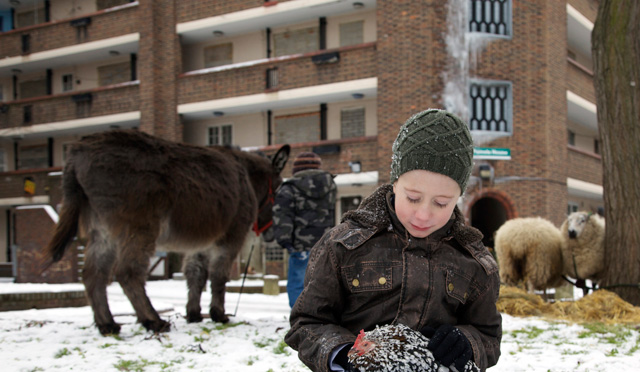
Film still from Estate, A Reverie (2015) by Andrea Luka Zimmerman.
You can see in Estate there are cows and sheep and donkeys. That came from one of the participants: her dad, who was the first person to move into these flats, used to have a smallholding down the road, which was taken away to make space for the first block of flats, in the first wave of regeneration in the 1930s. He wasn’t even allowed to have a dog on this estate, so he killed himself, with his dog. And she told me the story and it was very moving and we thought, how can we do justice to this story rather than it just being told. So then we got all the animals. I wanted the audience to think: “What is this space with the animals?” Because they also were there with him. This is how I work in films: it’s really a layering, like an archaeological dig almost. The questions are never asked directly, but they are asked through the stories that come from the people that offer them to me. And then I still make the film. I still have my name as director because someone has to take responsibility.
The collaborative effort is more that it’s a shared space where people’s stories are really listened to and validated and I have certain ethics around it. For example, I show people footage before I start editing. I say, if there’s anything they’re uncomfortable with I’ll take it out. Just at the rough-cut stage, I’ll show it again and ask how they feel about it now … And then I do a final cut. These processes are built in so people have the possibility to always catch something. It’s another way of collaborative trust-building. Sometimes I think people in society think collaboration is all of us sitting around and democratically making a project. For some projects, that’s the best, the only way. But in film, it’s almost impossible. Or in artworks, it’s almost impossible when you have an object the other side of it, like a film. It’s the process that’s collaborative, not the project in itself. It’s fragile, because then you have to acknowledge power relations.
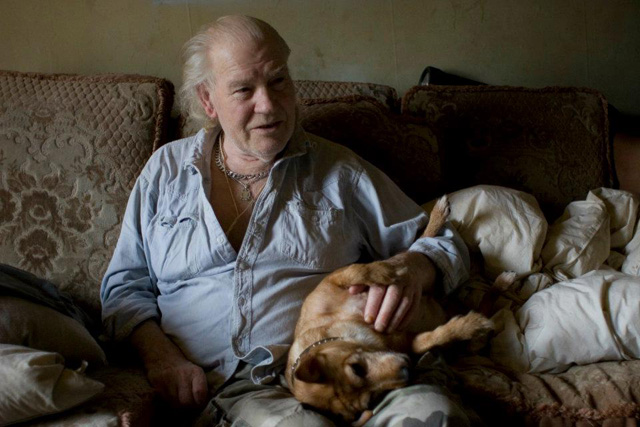
Film still from Estate, A Reverie (2015) by Andrea Luka Zimmerman.
VS: But for the people in the film, their contribution is extremely powerful – they are present and crucial in the narrative.
ALZ: In Estate, there’s a man, John, who has very severe Parkinson’s disease. I started way before he got it, years and years before. Then he got Parkinson’s and he was alone on the fourth floor with no lift, and if he wanted anything he had to ask a neighbour. Social services didn’t engage. No advocacy services existed at the time. We had everyone down there trying to help him. He wanted to use the film to show what happened to him, to show what a struggle it was for him to go to the doctor. The possibility is there for people to use the film as their campaign. To say: this is what happens to us. What if you’re a single, male and never married and you have no one around when you fall sick? It’s really powerful.
VS: Let’s talk about your cinematic influences. Do you see yourself following in any line of film-makers, such as Agnès Varda, or perhaps Ken Loach - in terms of subject matter?
ALZ: Not Ken Loach. His subject matter, yes. But he’s not interested in poetry the way I am, however much I love certain films of his, which are incredible. Agnès Varda’s The Gleaners and I (2000) is one of my favourite films. I really love Mohsen Makhmalbaf (b1957, an Iranian film-maker, whose 2001 film Kandahar was selected by Time magazine as one of the top 100 films of all time) and Samira Makhmalbaf (b1980, his daughter, also a leading film-maker). I think they were the most influential … that kind of Iranian cinema that was deeply political, but deeply poetic. I felt that gave me a language around class and around otherness and their refusal to even make “coda” films (films that feel the need to wrap up all the narrative threads neatly in a cathartic resolution). Most coda films, even if they say they’re independent, they still have a coda. Chantal Akerman (Belgian film-maker, 1950-2015), I like. For me, it’s about trying to find a different form each time you make a film that is adequate for the thing, but understanding also how structures work, while avoiding the coda, because I think coda films are so dangerous. We put the whole complexity of life in the same shape. No matter what it is, it’s the same shape. So people never really grapple with it.
VS: There is also that powerful element of time that you spend – seven years with Estate, four years with Here for Life. The time you spend with these people seems to me the rarest and purest form of generosity. As a viewer, you really feel that you have journeyed with them. And that’s so rare – so rare in the way we consume art, or the way we consume media or entertainment. How do you make a living as an artist giving that much time to what you do?
ALZ: I made a choice really early on in my life. I was at St Martins in the 1990s and nobody there had any money, so I learned to be really resourceful. But, also, I can’t make money from my artwork. Of course, I get paid. But I can’t take commissions very easily. I’m very selective. And only if they leave me open and free and because I have a part-time job, so I can pay my rent, that means I’m independent. I can’t be corrupted in that way. But I’ve always had to struggle within the art world, because I sometimes find it very rarefied, very insular. And the film world is also exclusive in a different way. So I hover in between; I haven’t really found my place, in a way.
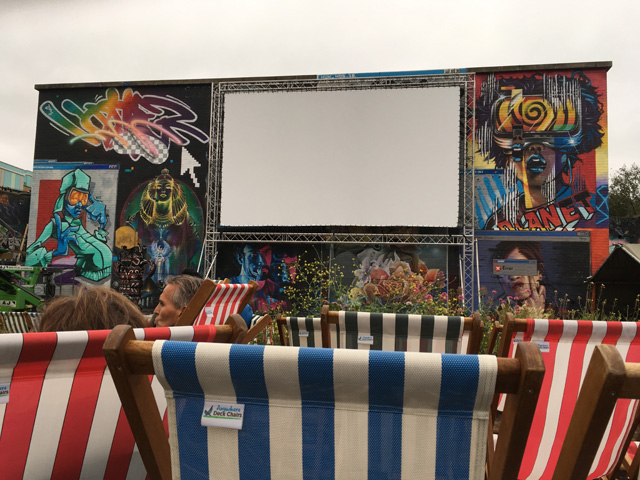
Nomadic Gardens in London. Photograph: Veronica Simpson.
I have to carve out these spaces - between a place like Nomadic Gardens and an art gallery and a cinema. And I show my films in all these different spaces. I could not be satisfied with just showing my films in one place. But it comes back down to the coda: I feel, that even when you apply for funding and you have to write a treatment, you have to have an outline already. They will never fund process, however much they say it matters, and it makes me so mad. For people who don’t come from a certain perspective of making, or speak a certain language of making, the world we’ve created makes it impossible to make this kind of film, even if that’s the kind of film people say they want. There is no process allowed. Whereas we were so lucky that we won this Artangel award: they said if you take five years, it doesn’t matter. Take 10 years, if you want to. They were with us the whole way.
VS: Do you think this formulaic film-making is partly why TV has stepped in to offer us such a great diversity of high-quality writing, and really interesting, unusual voices and perspectives – especially from women – are emerging?
ALZ: It’s interesting that work coming from the written to screen, from the text has really shaped up amazingly. What they have to catch up on is the other way around – I work from image to screen. For film-makers like me, who don’t work from text, it’s really different. It’s the suggestiveness of one image next to another image. And they just haven’t got the tradition here to support that.
When I was a kid and with only a black-and-white television on my council estate, I watched incredible stuff on TV. I watched [Andrei] Tarkovsky. Everything was subtitled. I saw the Austrian Action Group on TV with feathers and blood and everything, when I was 10! It was formative. I remember watching [Tarkovsky’s film] Stalker in black and white and I knew that was what I wanted to do. That’s why we need more variety.